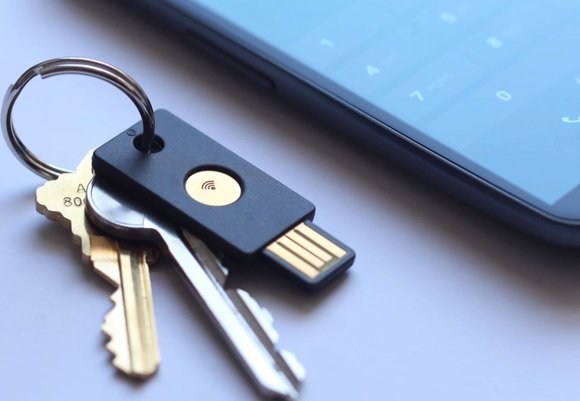Microsoft Windows 10: Biometrics are still a weaker form of password login, but Microsoft is about to fix that

You can dice it, you can slice it, but the difference between typing a password on a keyboard, punching in a PIN number,or letting your PC scan your face or fingerprint, isn’t that great:
On most systems, including a number of smartphones, gummy-bear fingerprint spoofing is still an effective way to unlock a device, in 50% of cases. Photographs can still be used on some systems to fool face recognition, unless you are using Intel’s proprietary hardware capable of detecting the presence of blood vessels under the user’s skin to determine whether your face is real, or printed on a piece of paper.
Wait... is two-steps authentication still good enough, at least?? Well... yes and no. If you are using text messaging to get your PIN, then no, but if you are using an authenticator app like Google Authenticator, or Microsoft’s own authentication app, you should be relatively safe.
There is no two-ways about it: privacy and security are at a nexus, and it’s important to understand that everything we share on social media, may potentially contain information that can be used against you, and can have real-world repercussions.
Among the many standards introduced over decades, FIDO 2.0 is one that may very well get us as close as possible to gaining some peace of mind in regard to device security. With that said, what is FIDO anyways?
The FIDO Alliance was formed in 2012, as an ecosystem for the development of passwordless authentication standards, which include fingerprint scanning, voice recognition, face and iris recognition, multi-step authentication methods commonly used with smartphones and other devices, and RFID-based authentication, such as magnetic strips, and other forms of contactless login.
While Apple has implemented Touch-ID in 2013 with the iPhone 5, Microsoft has been front and center on the issue of security, with a complete FIDO-based passwordless ecosystem in Windows 10. Windows Hello, which is an integral piece of Windows 10, embraces many different forms of authentication, including PIN, iris/face recognition, and fingerprint scanning, but it’s not limited to the current array. In fact, according to recent reports, Microsoft is planning to upgrade the current ecosystem to support FIDO 2.0, which allows for a higher level of security, particularly relevant in business environments.
FIDO 2.0 means that organizations, as well as individuals, can set up accounts that instantly unlock when in proximity to a special encrypted hardware key, like a USB dongle, a wireless/contactless device, like a smartwatch, a phone, or other device communicating on a short range, via Bluetooth, for example.
Any device that supports the FIDO 2.0 standard can be programmed to be used as a key, including small, inconspicuous devices that can be concealed or disguised easily, such as smart rings, that can be worn constantly, and charged wirelessly. FIDO 2.0 is said to be available as of the next upcoming Windows 10 update.
Ready to shop?
PortableOne has the best deals on Windows 10 Pro laptops, featuring the latest hardware-based security features, and full BitLocker encryption to protect your files from prying eyes.